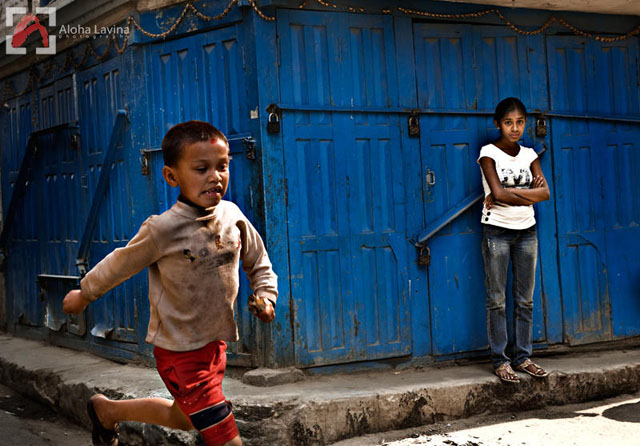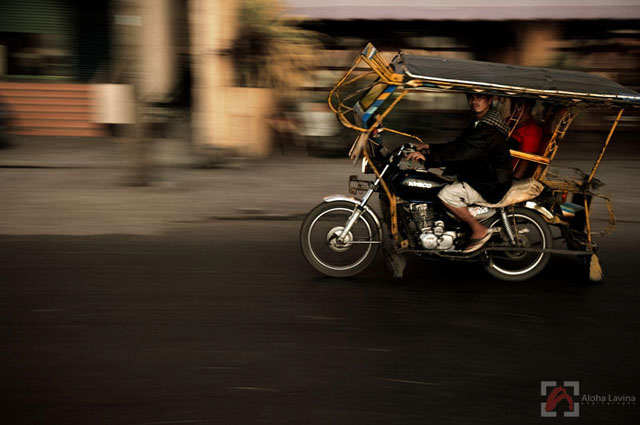Some people are technical learners, able to learn with a mathematical approach. Some others, including myself, don’t take to that technical approach very well. When I make an exposure, I begin with the subjective idea or the impact I want to create, and then think about the technique that will produce that impact, a moment later. But I would never have been able to make decisions about how to create an impact if I didn’t pay attention to the technical ways of making a shot.
If we take a look at how an image is made in the camera, there are a few things we have to think about in the process of making that image. We have to think of the available light, the sensitivity of the camera sensor, the amount of light being let in, and the speed at which the camera is able to capture what’s in front of the lens. To really get down to the basic technicality of making an image, you have to start with these four things.
Why is shutter speed important anyway?
Available light is the quality and amount of light that is reflected off your subject. The sensitivity of the camera sensor is indicated by the term ISO. The higher the number of the ISO, the more sensitive the camera sensor becomes. That means a high ISO helps the camera see with less light available. The amount of light that you let in through the lens is controlled by the aperture, or the size of the lens opening at the moment of capturing the photo. Finally, these three things combine to produce the shutter speed, or how fast the camera can capture the image with the amount of light it has available.
There are some basic relationships we can glean from the above information.
- If there is very little light available, the shutter speed will slow down because it takes longer for the camera to record the image.
- If we make the camera sensor more sensitive by bumping up ISO, we can speed up the shutter. Conversely, if we lower the ISO sensitivity, the shutter slows down.
- If we open up the aperture so it lets more light in, we speed up the shutter too. If we shoot at a smaller aperture, we slow down the shutter.
If you understand these basic principles, you can begin to control shutter speed to create the impact you want in your photos. You can control shutter speed by setting your Camera Menu to S on a Nikon or Tv on a Canon.
Why would you want to use shutter priority mode?
The important thing about shutter priority mode is that it’s how you can control the speed your camera takes the photo. The basic intuitive rule is, if you have a fast subject, you have to use a fast shutter speed to freeze it in the frame. The boy in Nepal was running down the alley, and knowing I had lots of light, I only had to worry about making sure the running boy would be sharp, so I closed the aperture to a value that gave me both the subject (girl and blue wall) and the foreground (boy) in relative sharpness.

Slow down the camera using Shutter Priority Mode
Something really fun to do in Shutter Priority Mode is slowing down the camera to show motion.
The photo below of the man in the Vietnamese market was shot with a telephoto because that’s the lens I had on at the time. In the split second I saw the man coming toward this clearing, I decided to shoot at a shutter speed that was slower than I needed to make a sharp shot. Because I needed 1/90 of a second to shoot a sharp photo at 90mm, I deliberately slowed the shutter to 1/70s. The result was a sort of ghosting around the man, suggesting his motion.

Use Shutter Priority Mode to Practice Panning Technique
Another thing fun to do in Shutter Priority Mode is a technique called panning. Panning is done by moving the camera from one side to the other, resulting in images that show motion. To pan successfully, you have to slow down shutter speed to a value lower than the inverse of your focal length. When you have a shot like this where the most important element that produces the shot is the shutter speed, you need to use Shutter Priority Mode; it just makes things simpler because you can adjust using just one dial, freeing you up to compose and make other creative decisions.
To do panning successfully, you want to really slow down the camera. Set ISO to the lowest possible. I use ISO 100-200 on the Nikon and ISO 100 on the Canon.
Practice panning in the times of day when there is little light, like early morning or late afternoon. Using these techniques when there is a lot of available light results in overly overexposed images, which will not work.
The shutter speed that can allow us to keep our subject sharp varies. Sometimes, like in the motorbike cab below, you need a shutter speed of 1/30 of a second.

Other times, you might meet a motorbike that needs a shutter speed of 1/25s.
You can use panning for people walking, cars, anything that moves. To find out how fast to make your shutter speed, you can experiment and then adjust the shutter speed until you get it right.
Shutter Priority Mode doesn’t have to be a mystery. Remembering a few things can help you decide how shutter speed can create more impact in the image you are making: how light affects the shutter speed, how to help increase or decrease the amount of light that enters your camera, and how creating frozen or blurred motion in the images you make can change the way the image speaks.





15 Comments
@alohal,
Nice, clean, and concise introduction to shutter priority mode.
Not to nitpick too much, but ISO is not the “sensitivity of the camera sensor” as stated in the article. Instead, it indicates the light sensitivity of your camera, if it’s digital, and your film, if it’s analog. See
Daniel, I have seen nitpicking before, but that deserves an award. 😉
Thanks Daniel, I know our readers appreciate that.
Aloha
Thank you so much for such a wonderful explanation. It was very informative.
I usually shoot in aperture priority to get the highest shutter speed or the lowest shutter speed. The problem I have with shutter priority is that say for example I am shooting sports. The sun comes out and suddenly my aperture is going to go up and I could get a even faster shutter speed.
So I set my camera to the lowest aperture and my shutter speed is always as fast as it can be.
Nice one, Aloha, as usual. Succinct and easy to follow. It would be interesting to see what Light Stalkers have for a preference – aperture or shutter speed priority. We do tend to be creatures of habit so its nice to see how the alternative can serve us. I don’t use shutter speed priority all that much but I’m going to set my camera on it this week and see how I go. Thanks for reminding me there are many ways to achieve a good result.
Thanks Tom, I prefer Aperture priority myself, unless I am shooting editorial in which case I always resort to Manual. Yes, it would be interesting to see what mode Light Stalkers prefer over the rest.
I have been trying to teach my friends how to take pictures on a DSLR. Either their own or mine.
For some reason they seem nervous taking pictures in fully manual. Instead, they will rely on things like shutter priority. The great thing about learning on a DSLR is that you can delete whatever pictures you don’t like.
But the great thing about these improved auto modes… is that it helps you learn… which is good so long as it isn’t used as a crutch.
Hi, yes you’re absolutely right, it’s important to experiment and not rely on the auto modes too much. We can only learn by trying new things. Thanks.
I think that the great benefit of digital cameras for a beginner actually is the ability to see the result immediately, while the settings and functions are fresh in mind.
apertur priority is my “standard” setting. Given enough light to keep reasonably high shutterspeed I choose to manipulate with aperture first and aloaf the machine to set the speed – or go to totaly manual, if I am not pleased with the result.
I am trying to be better at using the histogram as shooting, which leads to more manual settings of boath aperture and speed.
Hi Annasoffia, Thanks for your comment. Yes, it’s easy to change the shutter speed in Aperture Priority mode so it seems to be a favorite. The histogram is a big help, too. Do you tend to shoot for the histogram to be ‘heavy’ on the light end or the dark end?
Sorry for posting like crazy, having trouble with the images, here they are for a last time, hope this works.
https://www.flickr.com/photos/guitarplaya7/5864437495/
https://www.flickr.com/photos/guitarplaya7/5861802924/